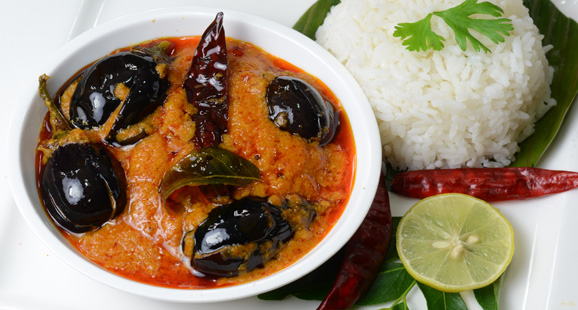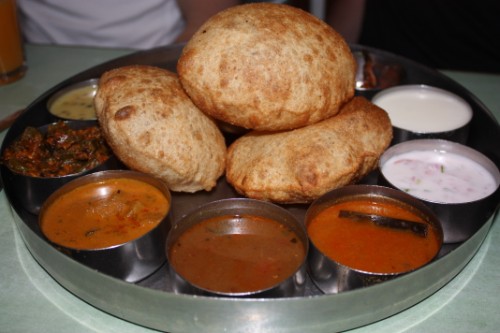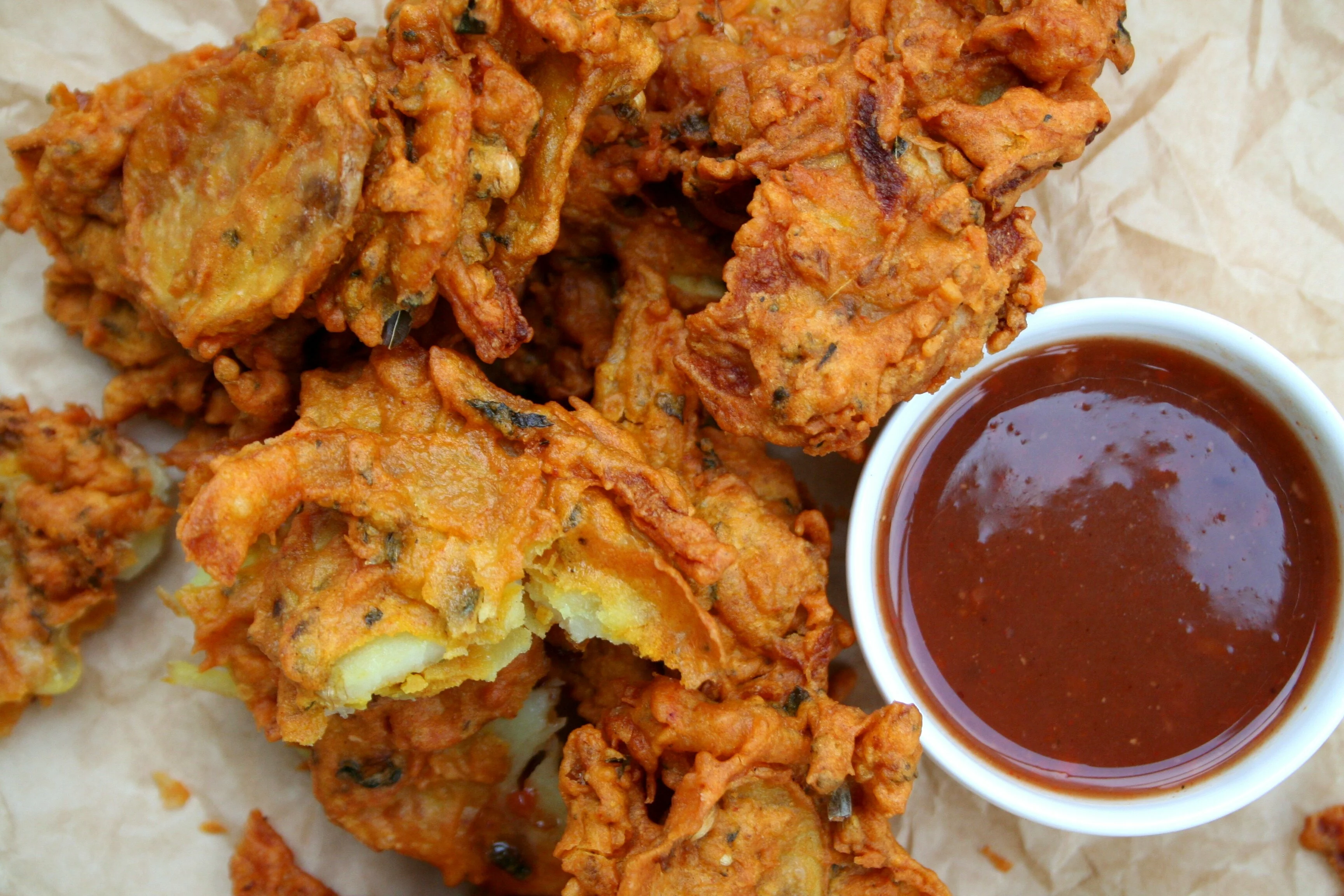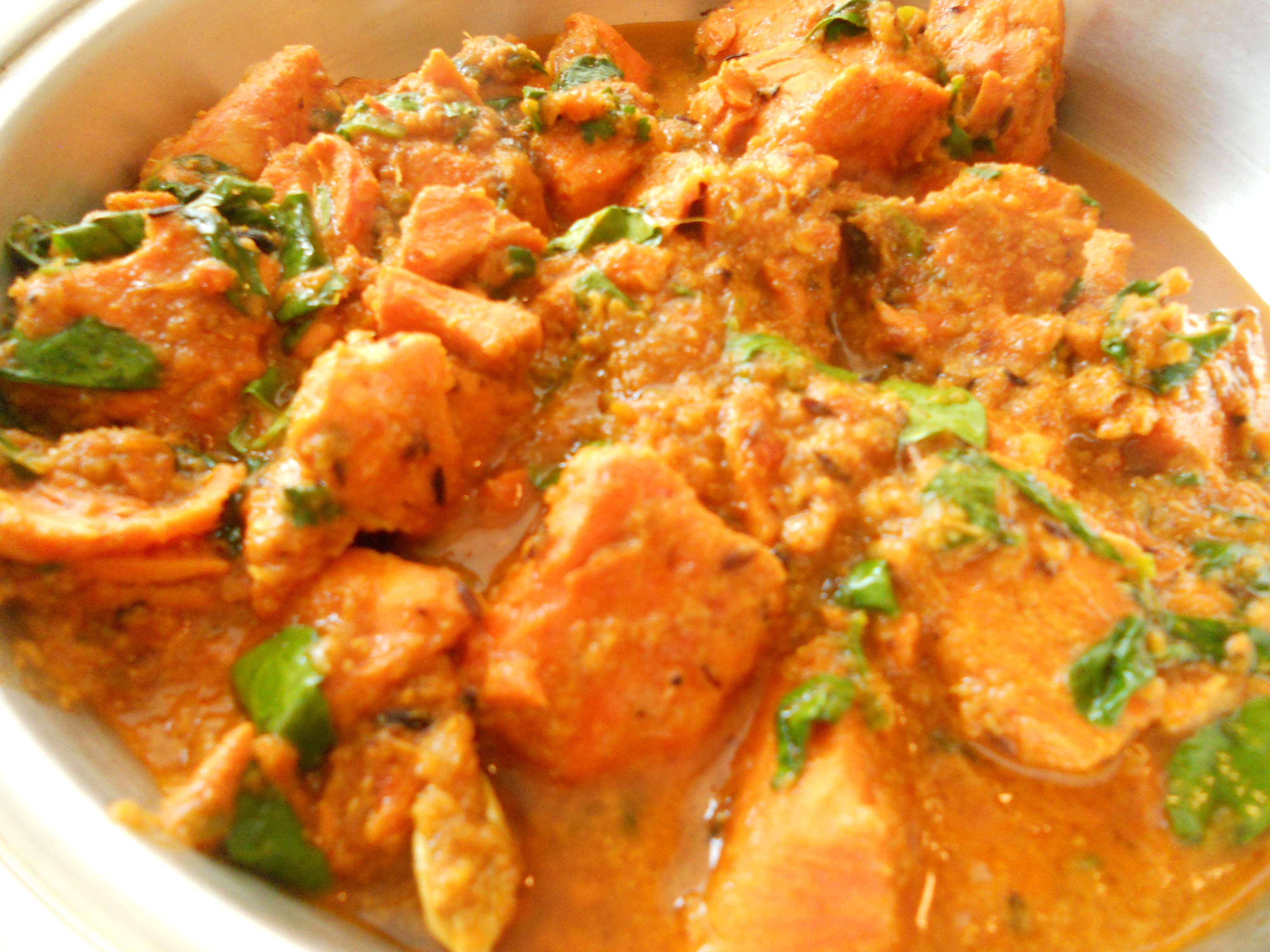History Of Indian Food Biography
source link (google.com.pk)
1. History of Indian Food – Introduction
Once considered the shining jewel in the British Empire’s crown, India can today be easily deemed as the huge, 60-carat diamond in the World’s flavored cuisine ring. The large variety of dishes, appetizers, snacks, side dishes and desserts have found numerous fans on an international scale, as Indian restaurants spread at an incredible rate, with an enormous success in every possible culture and in every possible corner of the World. Combining all tastes possible, the Indian cuisine is bound to satisfy spice-lovers, “salty” people and persons with a sweet tooth alike (although the latter will feel right at home, since India is a “sweet” country).
Some say that the Indian cuisine is almost as diverse as the entire European cuisine, because of the four different main regional styles: the North Indian cuisine (the regions Benaras, Kashmir, Mughlai, Punjab and Rajasthan), the South Indian cuisine (regions Andhra, Kannada, Kerala and Tamil), East Indian cuisine (regions Assamese and Bengali) and Western Indian cuisine (regions Gujarat, Maharashtrian and Malwani). The northern part of India is mostly rural, although it contains large cities such as Delphi or Calcutta, thus its cuisine is more agricultural than anything, wheat being a primary constituent of this region’s dishes. Southern regions however tend to be more exotic, more spicy in their dishes and rice is a constant ingredient in their food. To give the taste of their main dishes, North Indians use onions and coriander whilst southerners use a more exotic coconut base for their dishes.
The history of Indian food tells us that during the reign of the British Empire in India (the British Raj), the local cuisine was considered by the Europeans closely to what Gods taught of ambrosia: a delightful, heavenly and delicate dish. Many times, we ask how the Indian cuisine grew to be so popular, so diverse and so delightful. In truth, the question is quite dim…from a population of one billion people, is it really that hard to believe some of them are great cooks?…
But let’s take a closer look at what Indian dishes and snacks have to offer, providing a history of Indian food and a few related legends alongside. Ready your taste buds, because it’s going to be one juicy ride!
2. History of Indian Food - Indian Appetizers and Snacks
The history of Indian food and especially of Indian appetizers is closely related to the country’s culture and traditions. The Indian cuisine is as diverse as the Indian people and it has a large (and extremely rich) selection of appetizers, hors d'oeuvres, and snacks. Besides being extremely tasty and actually stimulating your appetite rather than diminishing it like some other cuisines’ appetizers, these fast snacks are also quite low in fat, since they are based on a number of spices and herbs, such as ginger, cinnamon, garlic, cloves, asafetida, aniseed or coriander, rather that the fat appetizers you’ll find mostly anywhere else in the World.
The majority of Indian appetizers and snacks are based on potatoes, combined with different spices. The Alu Ki Tikki for example, which is one of the oldest snacks recorded by the history of Indian food, is made out of mashed potatoes coriander and onions. Another snack greatly enjoyed by the British during the Raj period, the Samosa appetizer, made out of steamed potatoes, peas and vegetables, is one of the many Indian recipes that was passed on from ancient times.
Although most appetizers and snacks usually follow the same ingredients for each particular recipe, it should be noted that authentic Indian dishes can never be limited to a strict formula, since they differ from household to household. For example if you go to the North, in Punjab for instance and try out a Dahi Barra yogurt and fritter appetizer, it will definitely taste and even look slightly different than a similar Dahi Barra appetizer dish in Southern India’s Tamil region.
Because of this, when the British armies set foot in India, their cooks were dazzled by the sheer number of variations of the same dish. One legend stands out of the crowd from the history of Indian food, namely that of the British cook William Harold. William was quite an experienced chef, working for a rather successful restaurant in central London, when he was sent to India to help the war effort with his meals. Because his dishes were so delightfully well done, he was promoted to be the personal cook of a high ranking officer in the British Empire’s Army. One day, the officer ordered William to get the recipe for a local dish he ate and thoroughly enjoyed that day, named by the locals Bhel Puri, in order to mass-cook it for the troops.
Because there were very few written recipes in India back then (locals were passing on their cuisine with each generation, usually orally) William started walking from home to home, knocking from door to door, in order to find the recipe for the Bhel Puri, which, even today, is quite a complicated appetizer. With every house he went to, he got another recipe, another kind of spice to put on top of the potatoes and rice (seemingly the only ingredients that remained constant in the dish) and another kind of oil to use.
After a long day of inquiries in which the poor cook was unable to find a stable recipe for the wonderful snack, he returned to the barracks, beaten and amazed by the variety of semi-recipes he managed to pile up. Seeing that he is back, the officer asked if he could serve the first portion of Bhel Puri that night, but William told him he couldn’t get any real recipe in his hands and ironically stated that “we’ll have to stick to French fries again tonight, Sir!”. Legend says that the officer, berserk with fury, took out his handgun and shot the cook dead, causing a mutiny amongst the barrack’s soldiers, who were both fed up with the officer’s cruel and disrespectful ways and in love with William’s heavenly cooking. That’s how a small bowl of Bhel Puri (or should I say the lack of it) shook an entire British barracks and caused a long night in the Court Martial offices…
All legends aside, we now know an approximate recipe to the Bhel Puri (somehow thanks to poor William too). The tasty Indian snack is made out of crispy puris, puffed rice, Indian sevs, chilli powder, potatoes, red onion, chat masala, coriander and lemon or mango juice. It comes in two dish “versions”, spicy or sweet. The spicy chutney includes garlic cloves, mint leaves, salt and green chilies, while the sweet chutney’s ingredients are cumin seeds, jaggery, sugar, tamarind pulp and boiled dates pulp.
3. History of Indian Food – Indian Sweets
Indian cuisine is known throughout the entire World as a sweet cuisine and this tag doesn’t come along without some extremely solid arguments. How else would you call a country’s cuisine if almost half its dishes are either sweets or desserts? Actually, Indian sweets have not only made Indian food famous throughout history, but they have been acquired and accommodated to European and North American dishes, finding great success in fancy “Baltic” restaurants through-out England, France, the United States or Spain.
The Rasgulla for example, one of the most popular relished sweetmeats in India, originating from the Eastern part of the country, has an interesting modern history. This dish produced by the boiling of small pops of casein in sugar syrup has become emblematic of the quintessentially effeminate stuff of ridicule of the Bengali people. This sweet dessert can be found in almost all Eastern Indian households, while global malls sell it like there’s no tomorrow.
Another Indian dessert that blends with the Hindu culture is the Payasam (or Kheer as it is called by the Hindi). This dessert has been an essential dish throughout the history of India, being usually found at ceremonies, feasts and celebrations. In Southern India, ancient traditions tell that a wedding is not fully blessed if Payasam is not served at the wedding feast, this tradition being kept alive with each generation, still being practiced by newly wedded couples, mostly in the southern regions, from where the tradition started in the first place.
The best and most popular Payasam dishes are found in the temples of Guruvayoor and Ambalappuzha. In the Ambalappuzha temple, Payasam is served as part of a tradition, based on an ancient legend. The legend states that Lord Krishna (the eight avatar of Vishnu, playing a major role in the Hindu religion) took the form of an old sage and challenged the great king who ruled over that region to a game of chess. Being a true chess player and a master of the mind game’s tricks, the king gladly accepted the sage’s invitation. Asking what the sage wanted in case he wins the game, the king remained bedazzled by the sage’s request: an amount of rice grains for each square of the chess board, each pile having double the number of grains than the previous pile. So the first square would have only one grain of rice, the second would have 2 grains, the third would have 4 grains, the fourth would have 8 rice grains and so on, each pile growing at a geometrical progression from the past pile of rice grains. Hearing this request, the king was shocked that the sage wanted only what he taught were a few piles of grain, when he could have betted for his whole kingdom or the immense riches that he held.
Naturally the king lost, (because playing chess against a God is not that easy, mind you) so he started placing grain piles on each square, starting with only one grain. He soon realized that the sage’s demand was not entirely what he thought of, when the number reached one million grains of rice by the 20th square. By the 40th or so square, the entire kingdom’s rice reserve was depleted and when he got to the last square he calculated that he would have to pay the sage 18,447,744 trillions of tons of rice, which he could have never paid off. The sage then revealed his true form, that of Lord Krishna, and said that the debt does not have to be paid immediately, but the king will have to serve Payasam freely in the temple of Ambalappuzha, to pilgrims, homeless or whoever comes there for peace of mind and prayer or for those seeking shelter. This is how the Payasam became famous, integrating in the Hindu culture. The tradition of freely serving Payasam in Ambalappuzha still lives today and pilgrims all over India have an easier ride knowing that a hot bowl of the sweet dessert awaits them at the end of their journey.
Western India also does a great job on satisfying the sweet tooth of its inhabitants, with one of the most delicious desserts you will be able to find throughout the history of Indian food: the Shrikhand. The Shrikhand is a creamy dessert made out of strained yogurt, from which all water is drained off, leaving the thick yogurt cream by itself. Adding exotic dry fruits like mangos only enhances the Shrikhand’s delightful taste to newer limits. This great dessert is one of Western India’s most popular traditional dishes, since it has ancient roots in the Indian cuisine. Comparisons of this dessert to the Indian people have stated that Indians are a people who like to extract the best of things from everything, leaving everything else behind, their true and hospitable nature being a result of the fact that they dry out every spiritual detail that has no substance or meaning.
Other important traditional Indian sweets and desserts, famous throughout the history of Indian food, include the following: Gulab Jamun (a popular Indian dessert made out of fried milk balls in sweet syrup), Mysore Pak (a delicious dessert made out of ghee, sugar and chick pea flour), Halwa (or Halva in modern English spelling; made out of semolina and sugar, the Halwa is one of the most popular Indian desserts that have spread in every corner of the World), the Kulfi (often referred to as Indian ice cream, the Kulfi is made out of boiled milk and a wide variety of mango, kesar or cardamom flavors), the Jalebi (a common sweet dish from North India, the Jalebi is basically a pretzel-shaped fried batter, which is soaked in syrup) and the Jangiri (the South Indian look-alike of the North Indian Jalebi).
4. History of Indian Food – Conclusion
As we can easily conclude, the Indian cuisine is closely related to the Indian history, each historical region developing a unique set of dishes, using diverse ingredients. However, a constant remains for all regions: the affinity for sweet desserts and spicy snacks. Besides being closely related to history, Indian cuisine is also strongly influenced by the Indian religion, Indian culture and traditions and the Indian people themselves.
If you can appreciate the facts behind the history of Indian food, the setting in which this great country’s cuisine was formed, the influences it took and the diversity it created, then you will surely appreciate one of their sweet desserts or one of their spicy snacks and appetizers. No other country has a wider selection of exotic dishes and no other country can offer such a large variety of impulses for your taste buds.
History Of Indian Food Indian Food Recipes Images Thali Menu Photography Calorie Chart Items Pictures Photos
History Of Indian Food Indian Food Recipes Images Thali Menu Photography Calorie Chart Items Pictures Photos
History Of Indian Food Indian Food Recipes Images Thali Menu Photography Calorie Chart Items Pictures Photos
History Of Indian Food Indian Food Recipes Images Thali Menu Photography Calorie Chart Items Pictures Photos
History Of Indian Food Indian Food Recipes Images Thali Menu Photography Calorie Chart Items Pictures Photos
History Of Indian Food Indian Food Recipes Images Thali Menu Photography Calorie Chart Items Pictures Photos
History Of Indian Food Indian Food Recipes Images Thali Menu Photography Calorie Chart Items Pictures Photos
History Of Indian Food Indian Food Recipes Images Thali Menu Photography Calorie Chart Items Pictures Photos
History Of Indian Food Indian Food Recipes Images Thali Menu Photography Calorie Chart Items Pictures Photos
History Of Indian Food Indian Food Recipes Images Thali Menu Photography Calorie Chart Items Pictures Photos
History Of Indian Food Indian Food Recipes Images Thali Menu Photography Calorie Chart Items Pictures Photos













































